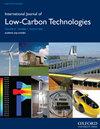Dynamo script and a BIM-based process for measuring embodied carbon in buildings during the design phase
IF 2.3
4区 工程技术
Q3 ENERGY & FUELS
引用次数: 0
Abstract
The globe has been moving in the direction of using less energy and emitting fewer emissions in recent years, which has a variety of implications like causing climate change. Hence, the environmental analysis is essential today in construction sector to develop a good product with adequate performance, safety, with logical cost and friendly to environment. One of the most significant emissions from various stages in the building sector is carbon dioxide, which may be further separated into two categories: embedded emissions and operating emissions. This paper’s main goal is to introduce a simple tool integrated into a BIM-based framework that provides an analysis of embodied carbon (related to SE2050’s commitment to net zero) in order to produce a manual for designers to select the appropriate materials, systems, and alternatives during the design phase. The suggested integration procedure was carried out using Autodesk Revit (to produce the 3D model), Dynamo (a visual programming tool), and BIM360 (to link with), with good interoperability between each product. Finally, a case study is done to apply and validate this process to foresee that the tool can be ready to use, the results shows that the maximum variance was 0.047, this support developers’ environmental strategies, and enable clients and other stockholders to consider the environmental impact in the early phases of the construction projects.Dynamo脚本和基于bim的流程,用于在设计阶段测量建筑物中的隐含碳
近年来,全球一直在朝着减少能源使用和排放的方向发展,这产生了各种影响,比如导致气候变化。因此,在当今建筑行业,环境分析对于开发一种性能良好、安全、成本合理、对环境友好的好产品至关重要。建筑行业各个阶段最重要的排放之一是二氧化碳,它可以进一步分为两类:嵌入排放和运行排放。本文的主要目标是引入一种简单的工具,该工具集成到基于BIM的框架中,提供对内含碳的分析(与SE2050对净零排放的承诺有关),以便为设计师在设计阶段选择合适的材料、系统和替代品编制手册。建议的集成过程是使用Autodesk Revit(用于生成三维模型)、Dynamo(一种可视化编程工具)和BIM360(用于链接)执行的,每个产品之间具有良好的互操作性。最后,进行了一个案例研究,应用并验证了这一过程,以预见该工具可以随时使用,结果显示,最大方差为0.047,这支持了开发商的环境策略,并使客户和其他股东能够在建设项目的早期阶段考虑环境影响。
本文章由计算机程序翻译,如有差异,请以英文原文为准。
求助全文
约1分钟内获得全文
求助全文
来源期刊

International Journal of Low-carbon Technologies
Engineering-Architecture
CiteScore
4.30
自引率
4.30%
发文量
106
审稿时长
27 weeks
期刊介绍:
The International Journal of Low-Carbon Technologies is a quarterly publication concerned with the challenge of climate change and its effects on the built environment and sustainability. The Journal publishes original, quality research papers on issues of climate change, sustainable development and the built environment related to architecture, building services engineering, civil engineering, building engineering, urban design and other disciplines. It features in-depth articles, technical notes, review papers, book reviews and special issues devoted to international conferences. The journal encourages submissions related to interdisciplinary research in the built environment. The journal is available in paper and electronic formats. All articles are peer-reviewed by leading experts in the field.
 求助内容:
求助内容: 应助结果提醒方式:
应助结果提醒方式:


